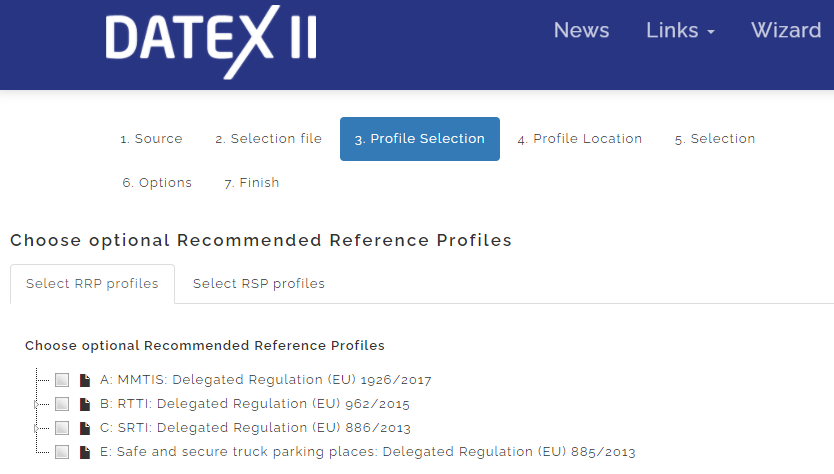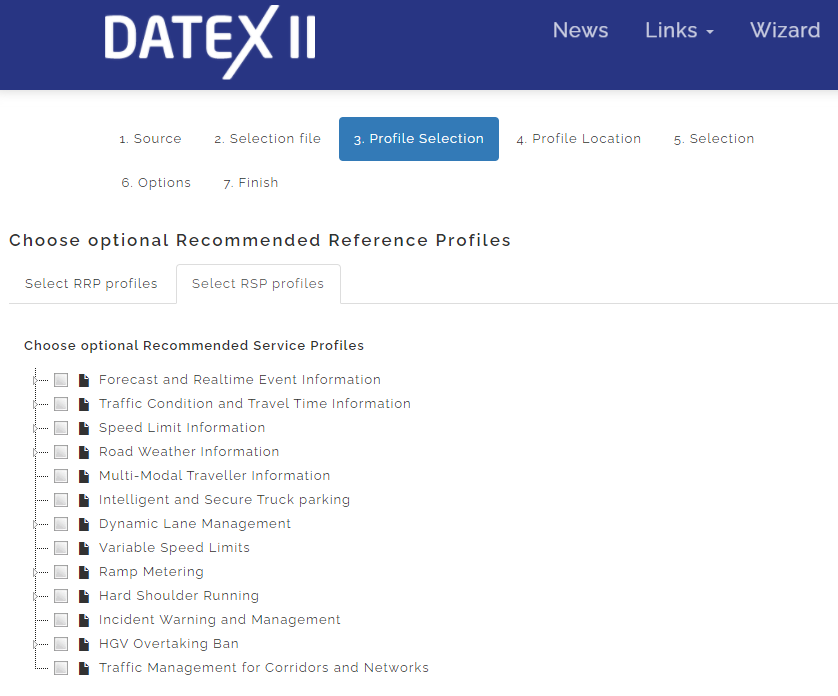Introducing DATEX II version 3.1
DATEX II version 3.1 is launched at the DATEX II webinar series 2020!
Version 3.1 adds CEN standardised variable message sign and road traffic data models to the version 3 roster, as well as extensions for the various urban applications. A model for trafffic management plans can be used alongside the Collaborative ITS Services specifications to extend DATEX II beyond information delivery into collaborative traffic management. The online DATEX II schema wizard for version 3.1 now offers a suite of recommended profiles to align to EU ITS Directives, and supports generation of JSON Schema as well as XML Schema.
DATEX II at the Heart of Connectivity
DATEX II is now at the heart of connectivity, supporting the digitalisation of road traffic and travel information. Next to important updates implemented for national road operators and service providers, DATEX II has broadened its focus to the domains of urban mobility, electromobility charging infrastructure, logistics, electronic traffic regulations, UVARs and cooperative, connected and automated mobility.
DATEX II has evolved technically since its origins, but it is still based on the fundamental principle of separation of technical concerns. This has supported the efficient addition of new models for new functional areas, new protocols and tools for software engineers, and new communication patterns extending from information exchange into control and collaboration.
Exchange 2020 update
The 2020 Exchange specification is fully available and enables both Data Delivery and the CIS Business Scenarios interactions supporting the DATEX II version 3 payload specification through the “Exchange 2020” specification available on the DATEX II Academy, which had superseded the “Exchange 2018” version, now deprecated.
“Exchange 2020” specification is compatible with the ongoing standardisation process, which is supported by a joint CEN and ISO action to deliver two different standards: the first one is "CEN ISO TS 19468 - Intelligent transport systems — Data interfaces between centers for transport information and control systems — Platform independent model specifications for data exchange protocols for transport information and control systems" which aims to describe the general exchange specification technology and describing interaction through a high level model which is not dependent on a specific technology in a model driven approach, defining functional exchange profiles by several possible exchange patterns. The second set of specifications is "CEN ISO TS 14827-4 - Intelligent transport systems - Data interfaces between centers for intelligent transport systems - Part 4: Data interfaces between centers for Intelligent transport system (Profile B)" describe the implementation of the high level specs defined in the TS 19468 in the specific SOAP Web Services platform supporting the exchange of DATEX II publication described in the CEN 16157 series standard.
Available Recommended Reference Profiles (RRPs)
To enable interoperability of information services related to specific use-case, DATEX II has developed and published the concept of reference profiles. For the support of the Delegated Regulations with regard to SRTI, RTII and MMTIS, Recommended Reference Profiles are now available. These RRPs contain the minimum core of information elements required to fulfill the obligations of the delegated regulations.
The requirements for profiling from various processes of harmonisation and liaison between various activities within EU EIP or with external stakeholder communities such as TISA and C-Roads.
In order to support the deployment guidelines maintained by EU EIP and the Delegated Regulations on ITS, the RRPs developed for the SRTI, RTTI, MMTIS and Safe and Secure Parking Places, can be checked on the Schema Generation Wizard tool, which will guide you through the process of creating a DATEX II Schema in 7 steps.

Reference information on these three types of information (SRTI, RTTI, MMTIS and Safe and Secure Truck Parking Places) is in the process of being published. This will be finalised on the documentation portal during the first half of 2021. The information can be found on DATEX II Docs: Recommended Reference Profiles (datex2.eu)
Common work with EU EIP on Recommended Service Profiles for the ITS Deployment Reference Handbook
To facilitate EU-Wide harmonisation and support the new deployments of ITS services, EU EIP offers the ITS Reference Handbook (as a successor fo the Deployment Guidelines) with lessons learned from the collected Best Practices.
The services in this handbook are now supported with DATEX II Recommended Service Profiles (RSP). DATEX II has set up these profiles in close collaboration with EU EIP. The documentation for the RSP can be found on the DATEX II Academy and the profiles can be accessed and checked in the DATEX II Webtool.

C-Roads collaboration note
The DATEX II and the C-Roads Platform join forces on the background of emerging cooperative intelligent transportation services (C-ITS). Both of them have already used various opportunities to demonstrate their technical and strategic importance in increasing the safety and efficiency of transport in Europe and beyond. With high potential for synergies, a cooperation between DATEX II and C-Roads was the logical next step. The ITS Europe Congress 2019 in Eindhoven provided a visible platform for the signature of a collaboration agreement.
When it comes to improving safety and efficiency of road transport, C-ITS services are definitely to be regarded a key enabling technology. Road operators usually hold essential information for V2I communication from traffic control centres (TCCs). As this kind of exchange is often done using DATEX II, the standard takes a high-potential role in the ITS value data chain to provide C-ITS services. For its part, C-Roads currently unites 18 European Member States with coordinated national pilots and cross-site testing activities to achieve transnational interoperability. In this way, C-Roads will ensure European cohesion of C-ITS deployment and is currently preparing a sustainable rollout of services.
The C-Roads Platform and the DATEX II PSA both acknowledge their key role of platforms and organisations. For effective collaboration, they have agreed on linking their efforts for their mutual advantage and the benefit of their stakeholders.

Liaison activities on overlapping standards
To guarantee that services are interoperable and consistent at the information level, it is necessary to ensure the interoperability of information across interfaces. This entails problems in the area of data management and consistency of information for overlapping parts of the standards.
In the last year DATEX II has focused efforts on establishing harmonisation/liaison activities with other organisations such as TISA, C-ROADs, Car2Car, TN-ITS, the Alliance for Parking Data Standards (APDS), Transmodal/NetEX, among others, which have as their main objective, to fulfill the promises of ITS to contribute to increased safety, better traffic efficiency and emissions reduction in an appropriate, aligned, consistent and undisturbed way fo the end user (road user, road operator/authority and/or service providers).
As a result of these activities, the different organisations involved in the process are currently working together, ensuring clarity in the published developments and standards, and it is expected to continue working in this way from now on in collaboration with future stakeholders who may join the process.
